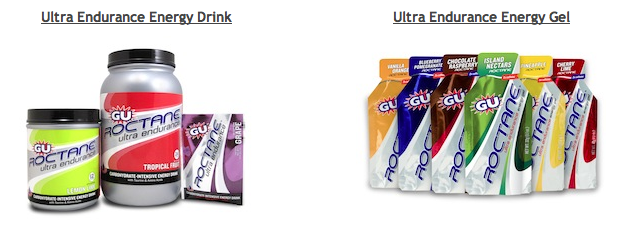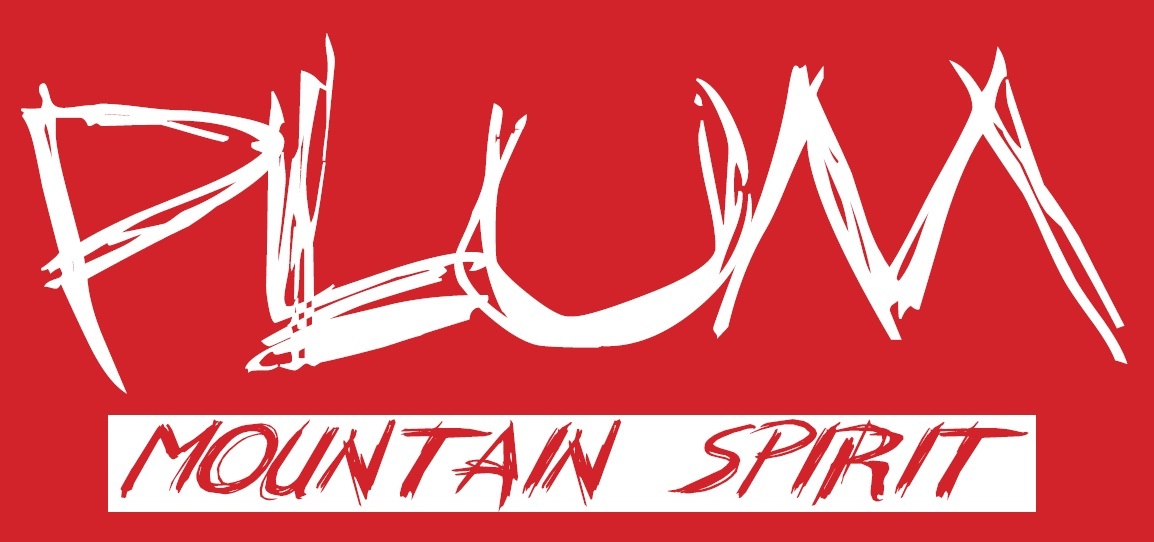Fueling On The Go
 Monday, December 19, 2011 at 11:03PM
Monday, December 19, 2011 at 11:03PM  Part of moving quickly in the mountains is maintaining energy levels. Forget to eat and you won't be going anywhere too fast for too long. In a race, this can be devastating but it can also suck on any long tour. Now, if you're the kind of skier that brings along some tasty turkey sandwiches, a big bag of trail mix and a couple of your favorite chocolate bars, well, you might as well stop reading right here. But if you've been experimenting with modern endurance fuels, carbohydrate gels and blocks, and you like what they do for you then read on.
Part of moving quickly in the mountains is maintaining energy levels. Forget to eat and you won't be going anywhere too fast for too long. In a race, this can be devastating but it can also suck on any long tour. Now, if you're the kind of skier that brings along some tasty turkey sandwiches, a big bag of trail mix and a couple of your favorite chocolate bars, well, you might as well stop reading right here. But if you've been experimenting with modern endurance fuels, carbohydrate gels and blocks, and you like what they do for you then read on.
There is a big difference between nutrition and fueling. For those involved in endurance sports, it's important to know the difference. Nutrition encompasses everything we eat while NOT participating in our athletic pursuits. That's a huge topic to be discussed at a different time. Fueling, on the other hand, is a simpler task involving easier choices.
Without getting too detailed here, when an athlete goes out ski touring, running, cycling, etc., the two primary fuel sources used by the body are fat and carbohydrate. These two fuels are burned in different proportions depending upon level of exertion. Go slow and we burn fat. Breathe hard and you're using mostly carbohydrate in the form of stored muscle and liver glycogen.
Most of us have enough fat stores to go almost indefinitely. But we're not setting any records here. Alternatively, pick up the pace and we'll tap into a limited supply of stored glycogen. Most text books will tell you we have about 800 calories worth of glycogen in our muscle cells and liver. That's not going to get you far. The key to extending the effort is to manage your intensity level and eat carbohydrate during the event.
One of the goals of training is getting our bodies to burn fat at higher intensity levels. This is a tricky process and not all physiologists agree on how and why this takes place. There is a genetic component for sure and some athletes just do it better than others. It probably accounts for some of the success of the great ultra-endurance stars. Regardless, we all need fuel coming in and carbs are the best choice. Eating fat seems like the thing to do because of it's energy density but it is far too slow to digest to be an effective performance fuel.
Now, that buffet-in-a-pack I mentioned before certainly has some carbs in it and will suffice for keeping energy levels up for the duration of the day. But fat and protein takes time to digest and slows the ultimate availability of the fuel for use. Digesting these meals also requires blood flow to the gut which can compromise your performance goals. Go slow and it's not much of a problem but pick up the pace and you just might jettison your lunch onto the skin track.
Ideally and for most efforts in the 2-10 hour range, simple carbohydrates will do the job nicely. The high fructose corn syrup debate notwithstanding, some fructose in the mix will help restore liver glycogen while on the move. Other carb sources like sucrose, glucose and maltodextrin all fill the bill. Some sports nutrition companies offer propaganda regarding the use of "sugar" or "simple sugar" in their products (or lack thereof) but it's probably a moot point. Just marketing bullshit. If it's sweet, you're gonna burn it. Find out what agrees with you and stick to it.
The truth is and recent research on the topic bares this out, using different carbohydrate sources (maltodextrin and fructose) allows our bodies to use different protein transporters (we're talking molecular biology here) to get the stuff where it needs to go. 'Nuff said on that.
I've been using endurance energy products since the first Powerbar came out around 1987. These bars were a big hit but ultimately impossible to eat while racing or going hard. I can still remember Ironman competitors cutting those horrible bars into little strips and sticking them to the top tube of their bikes during races. Yum. Although the original bars attempted to simplify fueling, they were an imperfect solution.
Drink mixes also gained popularity during this era and were a nice adjunct. Concentration of the mix was key in getting them into the system. Unfortunately, to avoid too much stomach upset, they had to be dilute and, as such, fell short in meeting fuel demands.
Enter the carbohydrate gel packet. Gu Energy came onto the scene in 1991 and changed endurance fueling forever. Gels and their solid form, chews, are the standard now. There are dozens of companies making similar products that get the job done. I've tried most of them. Taste and performance always brings me back to Gu.
I no longer worry about what to eat or how to quantify my intake. It's very straight forward if I know how long I'm going to be out. I shoot for somewhere between 200 and 400 calories an hour. We really can't digest much more than that.
Getting carbohydrate down your pie hole early in an event is key to preserving our carbohydrate stores. This, in turn, allows us more hot-burning nitro fuel when we need it at the end of an event. Mete out your effort right and keep the carbs coming in on schedule and your day will go well. Blow it and you'll be limping in fantasizing about cheese burgers and Oreos.
Although gel packets are pretty damn convenient, they can be a little messy and, when cold, hard to extract all the goodness from. I prefer Gu Flasks for longer days. They allow me to dispense with the packets making keeping track of my intake easier.Warm packets in boiling water
Pour 3 packets into each flask
Milk the gel out. Get every last drop
Top the rest off with hot waterTo make things even better in cold weather, I can dilute the Gu with water and the product flows even better. My formula is 3 packets of Gu in a 5 packet gel flask and top off the rest with water. In this way, I can get all the gel out of each packet beforehand and the thinner solution goes down easier when I'm going hard. I plan on one flask/hour and I'm set for the day. Simple fueling elegance.
300 easy-to-down caloriesAlthough the turkey sandwich and GORP crowd will roll their eyes or make that "eeeww" face at these suggestions, I spend more time skiing and less time sitting around freezing and chewing. I also rarely have a testy tummy and never return to the car dreaming of my next meal. This stuff simply works.
 Brian |
Brian |  9 Comments |
9 Comments | 





Reader Comments (9)
Brian,
You are apparently ingesting three packets of GU /hour, which is one every 20 minutes, way more than GU recommends. Any issues?
Hi Jim,
Frankly, I think you should ignore what Gu recommends. Ingesting 100 calories every 45 minutes is a slow way to a bonk, IMO. At race pace we are burning around 800 calories an hour. Hard to keep up with that.
Elite athletes will tell you that it's hard to "stomach" more than about 300-400 calories/hour. Look at the habits of pro cyclists and adventure athletes and you see just that. We can't seem to digest more at race intensity. Some athletes are better than others and some sports make energy consumption easier (cycling) than others (running).
It takes practice during training to figure what and how much works for you. I typically have no issues getting down 3 gels/hr. I use a flask and dilute the 3 with water. One flask/hour. Easy as pie.
Final question: do you sip on the flask over the course of an hour or down it all at once. Thanks!
Jim,
I usually take it in 2-3 big hits over the course of the hour. Even with such a simple nutrition goal, eating in races is still a pain in the ass. Long climbs are the worst because I'm usually on the rivet and gagging. The best time is after a skins-on transition as I start up but before my HR gets high again. But if the first climb is over 45 minutes, it's best to get a couple of hundred calories down during the effort. Pays off later.
Brian,
Another question if I haven't worn out my welcome. The races, etc. that you do are far beyond anything I would ever do from the standpoint of intensity. Basically, I am an old guy (68) who does guided climbs on Rainier, Baker, Adams, etc. Summit day is typically an all day affair at a lower intensity than your deals.
This October, some buddies and I are going to do the Grand Canyon rim to rim, rest day, then return. This will be fast hiking, NOT trail running. It will be about 12 hours each way. Do you think the Gu makes sense in this scenario? I wonder about carrying and downing 20-30 gels!
I go to Crossfit andI have basically adopted a paleo approach to eating day to day, with very few carbs. This seems to work very well in terms of overall health and keeping my weight in check. The Paleo people claim that you can do anything, including endurance events, fueled on protein and fats, but I wonder.
Would you do something like the GC fueled exclusively by Gu? I sorta cringe at the thought of nothing but gels for two days. Any thoughts much appreciated. Thanks.
Shit, Jim, these are good questions. This last one is challenging.
For me, there would be no question about using Gu products for the R2R2R. That's a great event. I have done it in a single push relatively unprepared and it was hard. I would like to go back and do it with more running in my legs. Either way, trail outings don't get much better.
Anyway, gels will fuel the effort perfectly but you must have some miles in your legs using them to be sure it's tolerated. I do all my skiing and running now on them and have completely even energy levels and am never hungry, even at the end. That is a good space to be in.
Fueling is a bother that must be attended to but I would rather worry about other stuff, like where I'm going. Using gels makes keeping track of the calories simple and there is no decision making about what you need and when. Just get down about 300 cal/hr and get on with it.
Yeah, your gut might get weird once in awhile but that will happen on anything. I've even puked once but only once and have not had a problem since. Water, carbs and electrolytes will get anything done. Hell, Twight, House and Backes did 60 hours on the South Face of Denali with almost all Gu. House and Garibotti did the Infinite Spur on Foraker in 25 hours on Gu. It can be done long term.
As for the Paleo folks, they are religious zealots out of touch with athletic reality. Sure, you can do anything carb free, you just won't feel so hot and won't be able to go hard. Get your heart rate up and you are burning carbs. Simple physiology. Feed the engine what it wants.
In truth, I think eating Paleo for health is a good thing. It works. It also works for non-endurance types doing hybrid stuff like CrossFit. But CF is NOT the R2R. Glassman's concept of a endurance day is a 5K run. Pleeeeze.
CFers do what they do well on any fuel. It doesn't matter. A big beat down for them is 25 minutes. This does not apply in my world. I've been in theirs'. You can't compare the two.
But if you are doing mostly CF and similar short efforts on protein and fat, you must experiment with carbs and gels before committing. I know it works and it does so for most of the endurance community around the world.
Bottom line, Jim, is you should fuel the effort with what works for you. If you are going to be talking with friends the whole way I don't think it matters. You could eat sand and probably get by. But if the juices start flowing and you get after it, gels are where it's at.
Have a great time. You're going to love it.
brian, i've enjoyed reading your posts about nutrition. i have an odd question for you...what effect do you think drinking beer has on athletic performance? my 2 passions in life are ski touring and good beer. i enjoy moving fast in the mountains. i'm not going for any speed records but i like skiing big lines and making good time. i train a lot, and was just curious how counter productive drinking beer is to my training. i'd say i drink 10-20 beers a week. i typically won't drink any beer the night before a big day in the mountains. any thoughts?
Hey Jay,
Sorry for the delay in the responding. I'm in the middle of a move. See the new post for details.
Anyway, interesting question. Since most skiers and climbers love beer it's a topic worth discussing. I won't pull any punches here so don't be offended if I don't say what you want to hear. You asked.
Nothing good comes from any sort of alcohol consumption besides gastronomic pleasure and a good buzz. Ethyl alcohol, the business end of any libation, is poison, period. I don't really give a shit what the industry says about wine being "good" for you, blah, blah, blah. Nonsense. Will it really hurt you? Well, not really. But it's no performance or health enhancer, that's for sure.
Personally, I drink red wine. Probably about a bottle a week, on average. That's 4 glasses. Any more than that I feel like shit and it gets pricey. I'm cheap.
If you were a patient of mine and I saw on your history that you drank 20 beers a week I would suggest that you were an alcoholic. Maybe a functional one but your intake is impressive. Now, I'm no counselor but I've been peripherally involved in this world for years.
It doesn't sound like your beer habit is making your life unmanageable which some would use as the definition of a drinking problem. You be the judge. But I would wager that it's not helping you much, either.
Your liver is pretty busy supporting hard athletic efforts. Drinking as much as you do is certainly burning some matches that could be better spent driving your ski outings. I guess you have to decide how much you like beer and your liver.
Your abstinence the day before going out is a good idea. The liver has a unique ability to recover from insult. Also, if you have extra fat around your mid-section, eliminating beer from your diet for 4-6 weeks will see that spare tire disappear significantly. Lot's of useless calories there.
all very fair points, thanks for getting back to me brian. i will try to scale back, especially for spring skimo season. we have some really nice conditions in the tetons right now. good luck with the move and getting settled in up there in AK.